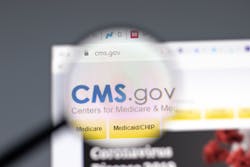The Centers for Medicare & Medicaid Services (CMS) has made advancing health equity a top priority, but a review by the HHS Office of Inspector General (OIG) found that inconsistencies in how race and ethnicity data is gathered inhibit the work of identifying and improving health disparities within the Medicare population.
OIG explained that it analyzed the race and ethnicity data in Medicare’s enrollment database, the only source of this information for all enrolled beneficiaries. These race and ethnicity data are derived from source data from the Social Security Administration (SSA) and the results of an algorithm that CMS applies to the source data.
The OIG assessed the accuracy of Medicare’s enrollment race and ethnicity data for different groups by comparing them to self-reported data for a subset of beneficiaries who reside in nursing homes. Race and ethnicity data that are self-reported are considered the most accurate. It also assessed the adequacy of Medicare’s data using the federal standards for collecting race and ethnicity data as a benchmark. OIG found that Medicare’s enrollment race and ethnicity data are less accurate for some groups, particularly for beneficiaries identified as American Indian/Alaska Native, Asian/Pacific Islander, or Hispanic.
Data that are not accurate limit the ability to assess health disparities. Limited race and ethnicity categories and missing information contribute to inaccuracies in the enrollment data, OIG’s report said. Although the use of an algorithm improves the existing data to some extent, it falls short of self-reported data. Finally, Medicare’s enrollment data on race and ethnicity are inconsistent with federal data collection standards, OIG said. These inconsistencies inhibit the work of identifying and improving health disparities within the Medicare population.
OIG recommended that CMS:
• develop its own source of race and ethnicity data,
• use self-reported race and ethnicity information to improve data for current beneficiaries,
• develop a process to ensure that the data are as standardized as possible, and
• educate beneficiaries about CMS’s efforts to improve the race and ethnicity information.
In its response to the draft report, CMS did not explicitly concur with the first recommendation and concurred with the other three recommendations.
In a May 3, 2022, letter to the OIG’s office, CMS Administrator Chiquita Brooks-LaSure wrote: “To augment the race and ethnicity data received from SSA, CMS has taken a variety of approaches to obtain or improve race and ethnicity information for people with Medicare including the use of indirect estimation methods (statistical imputation), conducting a postcard survey, and collaborating with the Indian Health Service. Most recently, in January 2022, CMS solicited comments regarding CMS’ intention to pilot the collection of race and ethnicity data on the Medicare Part C and D enrollment forms.
“As part of our work to advance health equity, CMS has interest in identifying patterns of differences across many key process and care outcomes by sociodemographic characteristics, including race and ethnicity. To best characterize these differences, we agree that self-reported and granular race and ethnicity data are needed. Efforts to improve the collection of such data will continue to strengthen our work to advance health equity, expand coverage, and improve health outcomes. In addition, new data will allow us to validate the existing indirect estimation methods that CMS uses for race and ethnicity to ensure that we do not rely on methodologies that unintentionally create or exacerbate disparities.”


